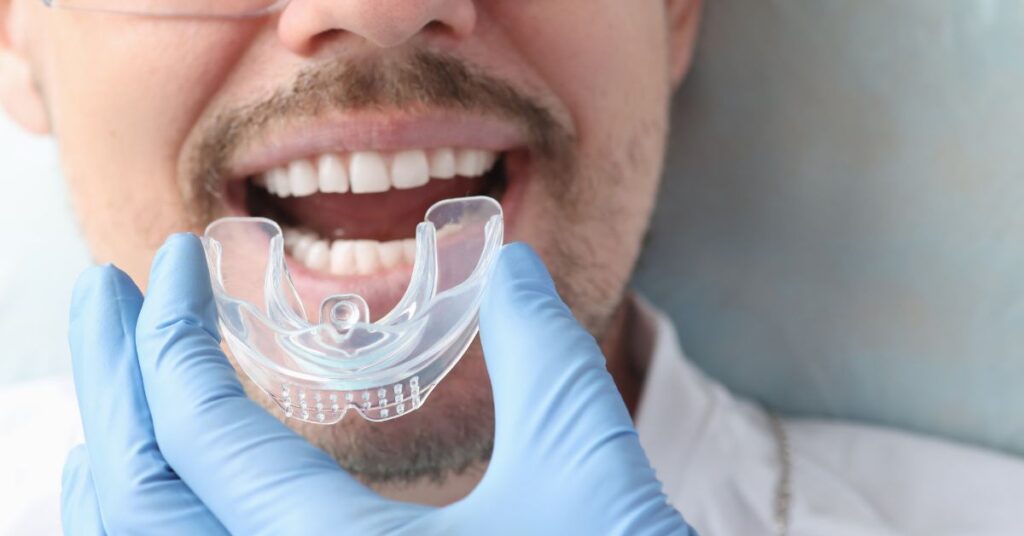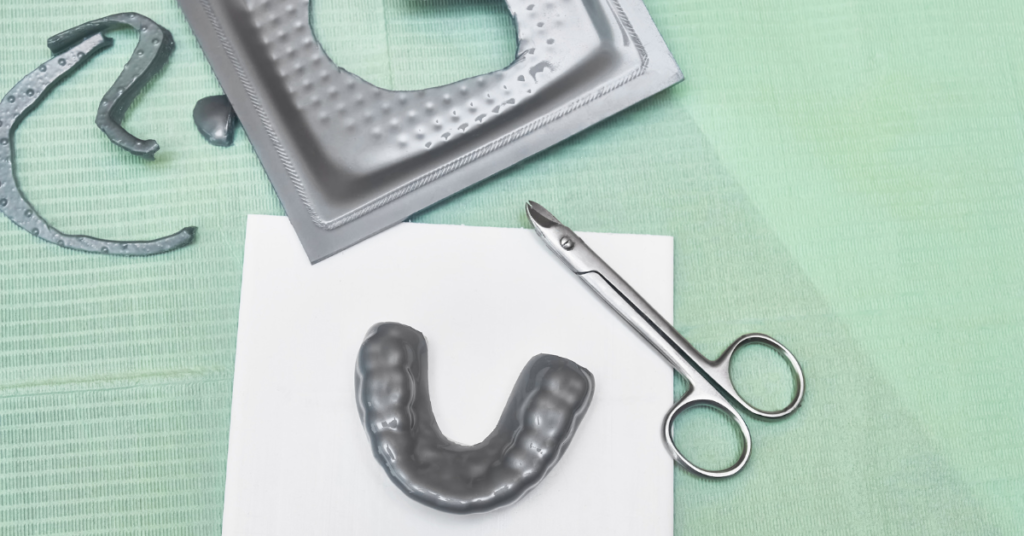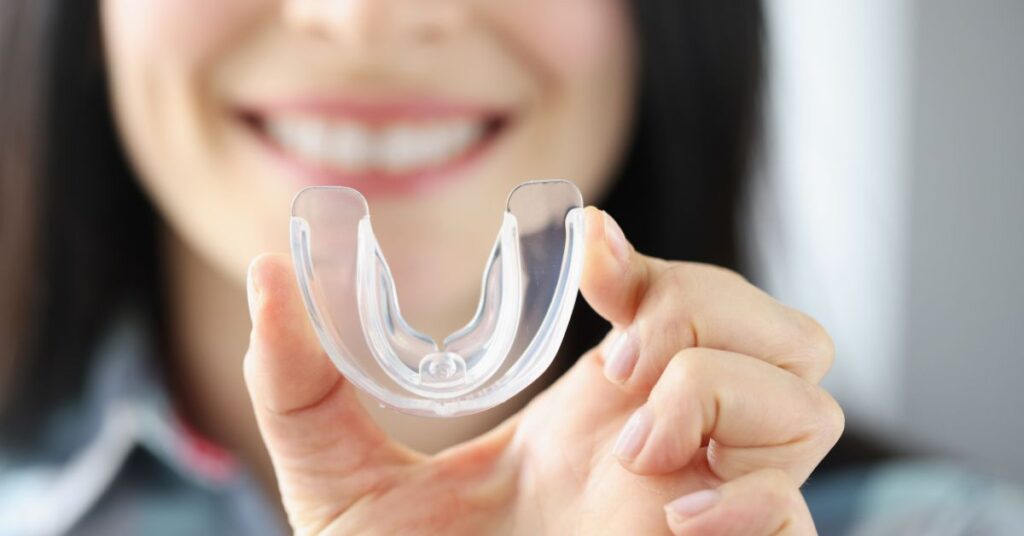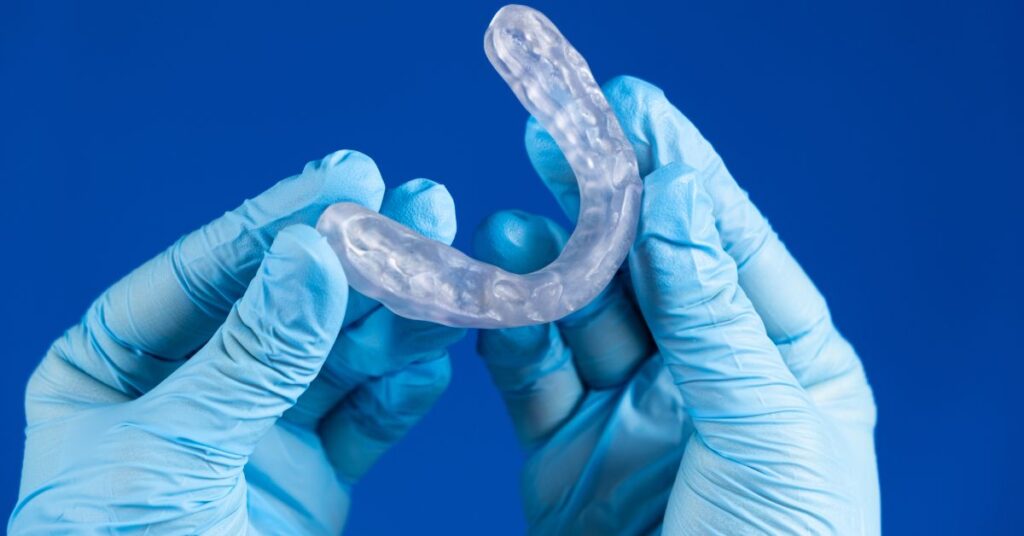
Introduction
What is a mouthguard?
A mouthguard is a protective device that is worn over the teeth and gums to prevent and reduce injuries to the teeth, jaws, lips, and cheeks. Mouthguards are commonly worn by athletes who participate in contact sports, but they can also be worn by people who engage in non-contact sports or who are at risk for dental injuries.
The Benefits of Wearing a Mouthguard

Preventing dental injuries
Mouthguards are designed to absorb the impact of a blow to the face, which can help to prevent dental injuries such as chipped or broken teeth, knocked-out teeth, root fractures, and jaw fractures.
Reducing the risk of concussions
Mouthguards can help to reduce the risk of concussions by absorbing the impact of a blow to the head and neck. Concussions can be serious injuries that can lead to a variety of health problems, including headaches, dizziness, nausea, vomiting, blurred vision, sensitivity to light and noise, difficulty concentrating, and memory problems.
Protects against lip and cheek injuries
Mouthguards can help to protect against lip and cheek lacerations by creating a barrier between the teeth and the lips and cheeks. Lip and cheek lacerations can be painful and can lead to scarring.
Improves athletic performance
Mouthguards can improve athletic performance by reducing anxiety and stress, and by providing a better fit for helmets and other protective gear. When athletes feel safe and protected, they are able to focus on their performance and give it their all.
How to Choose the Right Mouthguard

Choosing the right mouthguard is important for ensuring your safety and comfort. Here are some factors to consider when making your decision:
Type of mouthguard
There are three main types of mouthguards:
- Stock mouthguards: These are pre-formed mouthguards that come in a variety of sizes. They are the least expensive type of mouthguard, but they may not fit as well as custom-made.
- Boil-and-bite mouthguards: These mouthguard are softened in hot water and then molded to your teeth and gums. They provide a better fit than stock mouthguards, but they may not be as durable as custom-made.
- Custom-made mouthguards: These mouthguards are made by a dentist or orthodontist to fit your teeth and gums precisely. They are the most expensive type of mouthguard, but they also provide the best fit and protection.
Fit
The mouthguard should fit snugly but comfortably over your teeth and gums. It should not be too loose or too tight. If the mouthguard is too loose, it will not provide adequate protection.
Comfort
The mouthguard should be comfortable to wear for extended periods of time. It should not restrict your breathing or speech.
Breathability
The mouthguard should allow you to breathe easily. Some mouthguards are designed to be more breathable than others.
Durability
The mouthguard should be durable enough to withstand the impact of a blow to the face. Look for a mouthguard that is made of a high-quality material, such as ethylene-vinyl acetate (EVA) or thermoplastic elastomer (TPE).
How to Fit a Mouthguard

A well-fitting mouthguard is essential for optimal protection and comfort. Here are the steps on how to fit a mouthguard:
Boil-and-bite mouthguards
- Fill a saucepan with 3 to 4 inches of water. Bring to a rolling boil.
- Remove the saucepan from the heat and carefully place the mouthguard in the water for 12 seconds.
- Remove the mouthguard from the water with a spoon and immediately place it in your mouth.
- Bite down firmly on the mouthguard and mold it to your teeth and gums.
- Use your fingers to press the mouthguard tightly against your gums.
- Hold the mouthguard in place for 30-60 seconds, or until it has cooled and hardened.
Stock mouthguards
- Try on different sizes of stock mouthguards until you find one that fits snugly but comfortably over your teeth and gums.
- If the mouthguard is too loose, you can try heating it in a bowl of warm water for a few seconds. Then, quickly place it in your mouth and bite down firmly.
- If the mouthguard is too tight, you can try trimming it with a pair of scissors.
Custom mouthguards
Custom mouthguards are made by a dentist or orthodontist to fit your individual teeth and gums precisely. No fitting is required.
How to Care for a Mouthguard

Cleaning
- Clean your mouthguard after every use. Rinse it with cool water and brush it gently with a toothbrush and mild soap.
- You can also soak your mouthguard in a denture cleaner or a solution of one part vinegar to three parts water for 30 minutes.
- Be sure to rinse your mouthguard thoroughly after cleaning.
Storage
- Store your mouthguard in a clean, dry case.
- Do not store your mouthguard in direct sunlight or in extreme temperatures.
- Avoid storing your mouthguard with other sports equipment, as this can damage it.
By following these tips, you can help to ensure that your mouthguard is always in good condition and protects you from injury.
Conclusion
Wearing a mouthguard is one of the easiest and most effective ways to protect yourself from dental injuries, concussions, and other facial injuries while participating in sports.
mouthguards are essential for protecting against dental injuries, concussions, and other facial injuries during sports. Choosing the right mouthguard—whether stock, boil-and-bite, or custom—depends on your specific needs and budget. For the best fit and protection, consider investing in a custom mouthguard.
For expert advice and custom mouthguard fittings, visit Sri Sanjeevini Dental. Your dental health and safety are our top priorities.


